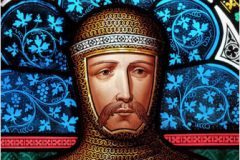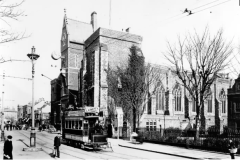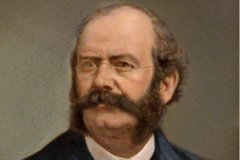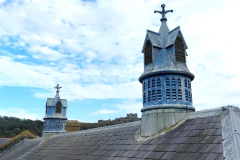The Maison Dieu in Dover will surely be high on the list of attractions for CHAS members to visit when it reopens to the public in early 2024.
In a fascinating talk, Martin Crowther (Engagement officer for the Maison Dieu) described its foundation (circa 1203) as a pilgrim hospital by William de Burgh (image 1) who was Justiciar as well as Earl of Kent, Constable of Dover Castle and Lord Warden of the Cinque Ports. It was interesting to hear how he successfully defended Dover Castle in a siege by the French in 1216 and defeated them at sea in the Battle of Sandwich (or should it be called the Battle of Dover?) the following year. The large Stone Hall (seen in image 2) was built circa 1300 and was used by the King for meetings, and members of his household would often stay there while the monarch was in Dover Castle. So in its earliest use the Maison Dieu provided accommodation to pilgrims on their way to the shrine of Thomas Becket, and also pilgrims returning from Canterbury or making visits to European shrines.
After the reformation (and for the next 300 years or so) the Maison Dieu became a victualling yard, supplying ships’ biscuit, salt beef and pork, and beer to the Royal Navy. The yard had its own mill, bakehouse, and slaughterhouse . The Agent Victualler, lived in a fine brick house (1665) next door. This is known as Maison Dieu House and is the home of Dover Town Council.
In 1850 architect Ambrose Poynter made renovations to the Stone Hall. He raised the floor nearly 3 metres to accommodate gaol cells beneath and the added stained-glass windows. William Burges (image 3) was appointed to complete the work including a fine new decorative roof, a new gallery at the west end, medieval style carvings of grotesque animals and coats of arms of the Lord Wardens of the Cinque Ports carved in stone. Colourful stained-glass windows were inserted between 1860 and 1873. They were designed by Edward Poynter who was only 19 at the time. He went on to become a famous artist and President of the Royal Academy.
During its occupation by Dover town council a new chamber in Gothic style was added to the building in the 1860s. Martin described the rare sun burners (image 4) in the middle of the ceiling that provided gas illumination to the chamber with a vent to the roof allowing fumes to escape. There are only 10 in the whole country and Dover has two of them. The Connaught Hall (Assembly Rooms used for major functions) was added in the late Victorian period.
Martin described the enormous scale of the renovation work and historical research that is still ongoing, and his talk was full of interesting anecdotes (for example why “Ye Olde Frying Pan” is currently in Derby and why a bottle of champagne was discovered above a suspended ceiling in the gents’ toilet). Soon it may be possible to spend a night or two in the Mayor’s Parlour. CHAS members who missed the presentation are able to see a recording of Martin’s talk in full by sending an email to Chas.membership@gmail.com. Otherwise please visit the Maison Dieu website and be sure to stay up to date with news on the reopening in 2024.
Click on the images below to enlarge




